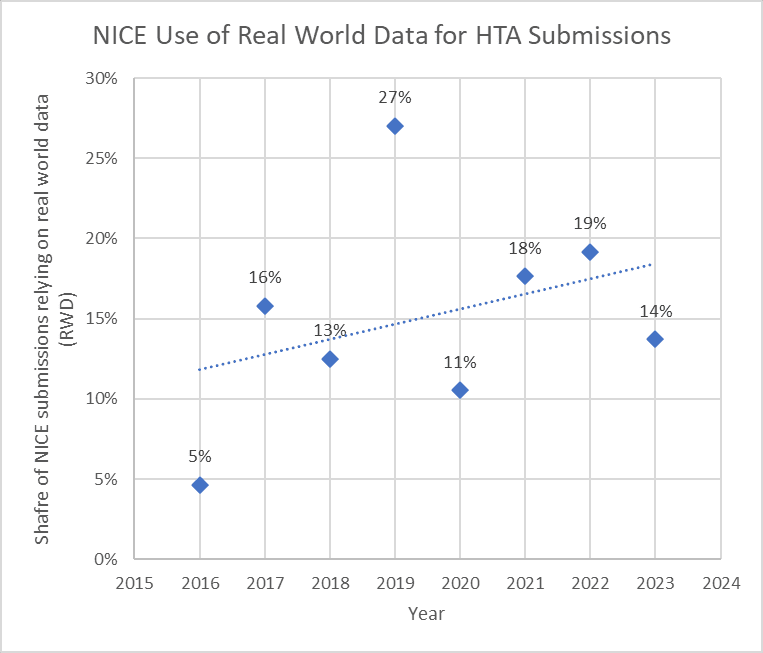Does NICE consider real-world data (RWD) for HTA evaluations?

The answer is ‘yes’, but the question is in what manner? A paper by Che et al. (2024) examines the use of real-world data (RWD) across 2016-2023 HTA assessments. Over this time period, 11% of HTA submissions included real-world data. Further, they find that:
The main sources of RWD considered in the submissions were disease registries and electronic health records. RWD were primarily used to provide an external control arm to enable comparisons within single-arm trials and to inform long-term treatment effects when extrapolating survival data beyond the trial follow-up. Adjustments for potential systematic differences between treatment groups have improved over time; however, approximately one-third of the submissions still relied on unadjusted treatment comparisons…Over one-third of the submissions relied on naïve and/or unadjusted treatment comparisons…
We see a trend towards increasing use of RWD as part of NICE HTA submission.
Out of the 64 HTA submissions with RWD, two-thirds (n=44 ) considered RWD for ECA analysis only in the base-case, 9 were considered in both the base-case and sensitivity analysis, and 11 considered RWD only in sensitivity/scenario analysis.
Confounding adjustments were performed in the majority of cases (30 of 44), with weighting (n=20), matching (n=7), regression (n=4), and simulated treatment comparison (n=2) the approaches used.
Why was RWD not used? For survival extrapolation, a number of rationales were provided:
In 20 submissions, the real-world ECA [external control arm] was deemed inappropriate for extrapolation for various reasons, such as (1) short follow-up, (2) inclusion of treatments not observed in UK clinical practice, and (3) key endpoints (e.g., progression-free survival) not collected.
You can read the full article here.




